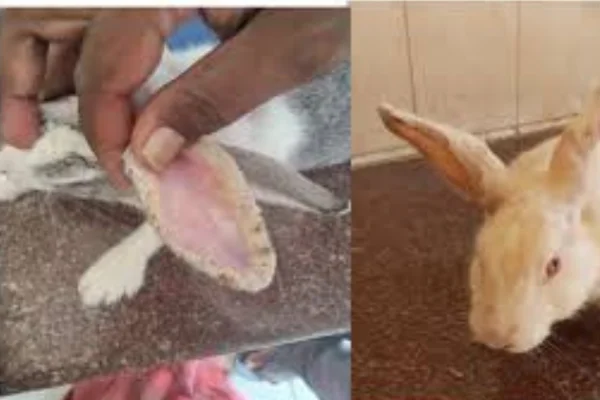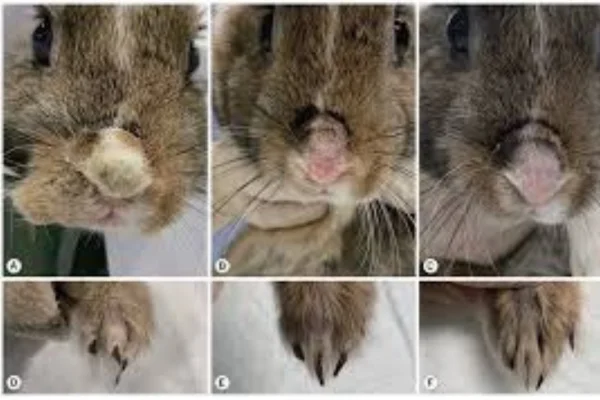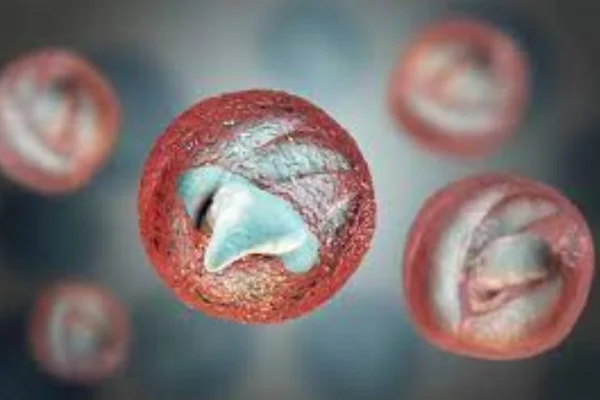Scabies in rabbits:
Identifying, Treating and Preventing This Common Problem
Scabies in Rabbits -Raising rabbits as pets has become increasingly popular, but along with the cuteness and curiosity of these little companions, there are also health challenges that every guardian must be prepared to face.
One of the most common problems among rabbits is mange, a disease caused by mites that can affect the skin and ears of these animals. In this article, we'll explore in detail what rabbit mange is, how to identify the signs, the treatment methods available and, most importantly, how to prevent this uncomfortable and potentially serious condition.
Contents
What Is Scabies and How Does It Affect Rabbits?
Scabies is a skin infection caused by mites, small parasites that feed on the skin of rabbits. There are different types of mange that can affect rabbits, the most common being sarcoptic mange and psoroptic mange.
Sarcoptic mange is caused by the mite Sarcoptes scabieiwhich penetrates the deeper layers of the skin, causing intense itching and inflammation. Psoriatic scabies, on the other hand, is caused by the Psoroptes cuniculiThis usually affects rabbits' ears, causing irritation and the formation of scabs.
These mites are highly contagious and can be transmitted from rabbit to rabbit, or even from other animals to rabbits, including humans. That's why it's essential for rabbit owners to be aware of the signs of mange and know how to act quickly to avoid complications.

Symptoms of Scabies in Rabbits: What to Look For?
The symptoms of mange in rabbits can vary depending on the type of mite involved and the severity of the infestation. However, some common signs can help identify the presence of this condition:
- Intense itchingOne of the first signs of mange is constant itching. The rabbit may scratch obsessively, using its hind legs or rubbing its body against objects to try to relieve the discomfort.
- Hair lossAreas affected by scabies often show hair loss. This can occur due to constant scratching, which damages the hair follicles, or as a result of irritation and inflammation of the skin.
- Redness and inflammationThe skin in the affected areas can become red, swollen and inflamed. In more serious cases, open wounds can appear, leaving the rabbit susceptible to secondary infections.
- Crust on the EarsIn the case of psoroptic mange, it is common to see the formation of scabs on rabbits' ears. These scabs are usually accompanied by an unpleasant smell and can be very painful for the animal.
- Altered BehaviorRabbits with mange can show changes in behavior, such as irritability, lack of appetite and lethargy. These symptoms reflect the discomfort that mange causes, affecting the animal's general well-being.
Diagnosis of Scabies in Rabbits: When to See a Veterinarian?
If you notice any of the symptoms mentioned, it's crucial to go to a vet who specializes in exotic animals or small mammals. Diagnosing mange in rabbits is usually done through a clinical examination, in which the vet will analyze the affected areas and take skin samples for microscopic examination. This procedure is essential for identifying the type of mite causing the mange and determining the most appropriate treatment.
Treatment of Scabies in Rabbits: Options and Care
Treatment of mange in rabbits should be started as soon as possible to prevent the condition from worsening and the mites from spreading. There are several therapeutic approaches, which can be combined to achieve the best results:
- Topical MedicinesInsecticide-based creams, ointments and sprays are often used to treat mange in rabbits. These products help eliminate the mites directly on the animal's skin. It is important to follow the vet's instructions on application and duration of treatment.
- Ivermectin injectionsivermectin is an effective anti-parasitic against mites and can be administered by injection. The vet will determine the correct dosage based on the rabbit's weight and the severity of the infestation. It is common for several doses to be needed over a few weeks.
- Medicinal bathsIn some cases, baths with medicinal shampoos can be recommended to relieve itching and help remove scabs. However, rabbits are stress-sensitive animals, and baths should be carried out carefully so as not to cause further discomfort.
- Environmental treatmentIn addition to treating the rabbit, it is essential to disinfect the environment in which it lives. Mites can survive outside their host for some time, so cleaning cages, toys, and even the owner's clothes and hands is an essential measure to prevent re-infestation.
- Continuous MonitoringAfter treatment, it is important to monitor the rabbit to ensure that the mange does not return. Visits to the vet may be necessary to monitor the animal's recovery.

Preventing Scabies in Rabbits: Keeping Your Pet Healthy
Preventing mange in rabbits is just as important as treating it. There are several measures that owners can take to reduce the risk of mite infestation:
- Strict hygieneKeeping your rabbit's cage clean and dry is essential. Dirt and humidity can create a breeding ground for mites. Clean your rabbit's accessories regularly, including feeders, drinkers and toys.
- Regular InspectionsCheck your rabbit's skin and ears regularly. Any signs of redness, scabs or excessive itching should be investigated. The earlier mange is detected, the easier it is to treat.
- Avoid contact with unknown rabbitsIf you have more than one rabbit or are considering adding a new member to the family, keep the rabbits separated until you are sure the new rabbit is healthy. This helps prevent the transmission of mites between the animals.
- Regular Veterinary ConsultationsTaking your rabbit to the vet for regular check-ups is a great way to prevent health problems, including mange. The vet can identify early signs of infestation and provide advice on preventative care.
Final considerations
Scabies in rabbits, although common, is a condition that can be managed and even prevented with the right care. As a guardian, being aware of the signs of mange and acting quickly is the best way to ensure your rabbit's health and well-being. Remember that prevention is always more effective and less stressful than treatment, so adopting hygiene practices and regular care is essential.
Your rabbit deserves to live free from discomfort, and with the right information, you can help it live a healthy and happy life. If you suspect your rabbit has mange, don't hesitate to seek veterinary help. With the right treatment and care, your rabbit will be back to its normal routine in no time.








